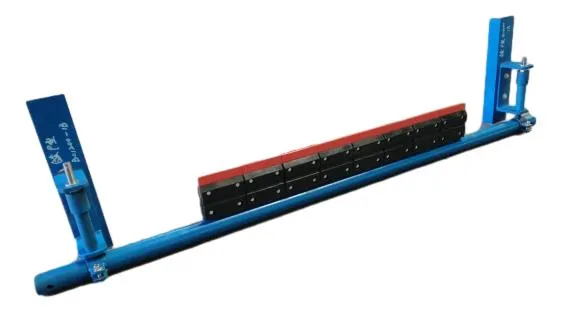 Afrikaans
Afrikaans  Albanian
Albanian  Amharic
Amharic  Arabic
Arabic  Armenian
Armenian  Azerbaijani
Azerbaijani  Basque
Basque  Belarusian
Belarusian  Bengali
Bengali  Bosnian
Bosnian  Bulgarian
Bulgarian  Catalan
Catalan  Cebuano
Cebuano  Corsican
Corsican  Croatian
Croatian  Czech
Czech  Danish
Danish  Dutch
Dutch  English
English  Esperanto
Esperanto  Estonian
Estonian  Finnish
Finnish  French
French  Frisian
Frisian  Galician
Galician  Georgian
Georgian  German
German  Greek
Greek  Gujarati
Gujarati  Haitian Creole
Haitian Creole  hausa
hausa  hawaiian
hawaiian  Hebrew
Hebrew  Hindi
Hindi  Miao
Miao  Hungarian
Hungarian  Icelandic
Icelandic  igbo
igbo  Indonesian
Indonesian  irish
irish  Italian
Italian  Japanese
Japanese  Javanese
Javanese  Kannada
Kannada  kazakh
kazakh  Khmer
Khmer  Rwandese
Rwandese  Korean
Korean  Kurdish
Kurdish  Kyrgyz
Kyrgyz  Lao
Lao  Latin
Latin  Latvian
Latvian  Lithuanian
Lithuanian  Luxembourgish
Luxembourgish  Macedonian
Macedonian  Malgashi
Malgashi  Malay
Malay  Malayalam
Malayalam  Maltese
Maltese  Maori
Maori  Marathi
Marathi  Mongolian
Mongolian  Myanmar
Myanmar  Nepali
Nepali  Norwegian
Norwegian  Norwegian
Norwegian  Occitan
Occitan  Pashto
Pashto  Persian
Persian  Polish
Polish  Portuguese
Portuguese  Punjabi
Punjabi  Romanian
Romanian  Russian
Russian  Samoan
Samoan  Scottish Gaelic
Scottish Gaelic  Serbian
Serbian  Sesotho
Sesotho  Shona
Shona  Sindhi
Sindhi  Sinhala
Sinhala  Slovak
Slovak  Slovenian
Slovenian  Somali
Somali  Spanish
Spanish  Sundanese
Sundanese  Swahili
Swahili  Swedish
Swedish  Tagalog
Tagalog  Tajik
Tajik  Tamil
Tamil  Tatar
Tatar  Telugu
Telugu  Thai
Thai  Turkish
Turkish  Turkmen
Turkmen  Ukrainian
Ukrainian  Urdu
Urdu  Uighur
Uighur  Uzbek
Uzbek  Vietnamese
Vietnamese  Welsh
Welsh  Bantu
Bantu  Yiddish
Yiddish  Yoruba
Yoruba  Zulu
Zulu troughing rolls
Troughing rolls, often utilized in various conveyor systems, play a crucial role in material handling across various industries. These rolls are designed to facilitate the efficient movement of bulk materials while minimizing spillage and ensuring product integrity throughout the transportation process.
The primary function of troughing rolls is to support the conveyor belt and maintain its structural integrity. By allowing the conveyor to form a trough shape, these rolls help in containing the material being transported. This design minimizes the risk of material falling off the edges of the belt, which can lead to waste and increased operational costs. Moreover, the troughing design ensures that the belt can carry more material at once, optimizing throughput and improving efficiency.
Troughing rolls come in various configurations and angles, typically ranging from 20 to 60 degrees. The choice of angle depends on the specific application, including the type of material being transported and the desired capacity. For instance, steeper trough angles are suitable for transporting heavier materials, while shallower angles are ideal for lighter loads. It’s essential to select the right configuration to ensure optimal performance and longevity of the conveyor system.
troughing rolls

Additionally, the materials used in the construction of troughing rolls are critical for their performance
. Commonly manufactured from robust materials such as steel or durable plastic, these rolls are designed to withstand harsh operating conditions and heavy loads. The quality and design of the rolls also contribute to reducing wear and tear on the conveyor belt, which minimizes maintenance costs and downtime.The installation and maintenance of troughing rolls should be performed with precision. Regular inspections are essential to ensure that they are functioning correctly and to identify any signs of wear and tear early on. Proper alignment of the rolls is crucial, as misalignment can lead to uneven wear of the belt and decreased efficiency.
In conclusion, troughing rolls are a vital component of conveyor systems, enhancing the efficiency and reliability of material handling operations. By selecting the appropriate roll configuration and ensuring proper maintenance, industries can maximize their productivity and minimize operational costs. As technology progresses, innovations in troughing roll design and materials will likely continue to improve the effectiveness of conveyor systems, solidifying their importance in industrial applications.
-
Revolutionizing Conveyor Reliability with Advanced Rubber Lagging PulleysNewsJul.22,2025
-
Powering Precision and Durability with Expert Manufacturers of Conveyor ComponentsNewsJul.22,2025
-
Optimizing Conveyor Systems with Advanced Conveyor AccessoriesNewsJul.22,2025
-
Maximize Conveyor Efficiency with Quality Conveyor Idler PulleysNewsJul.22,2025
-
Future-Proof Your Conveyor System with High-Performance Polyurethane RollerNewsJul.22,2025
-
Driving Efficiency Forward with Quality Idlers and RollersNewsJul.22,2025





























